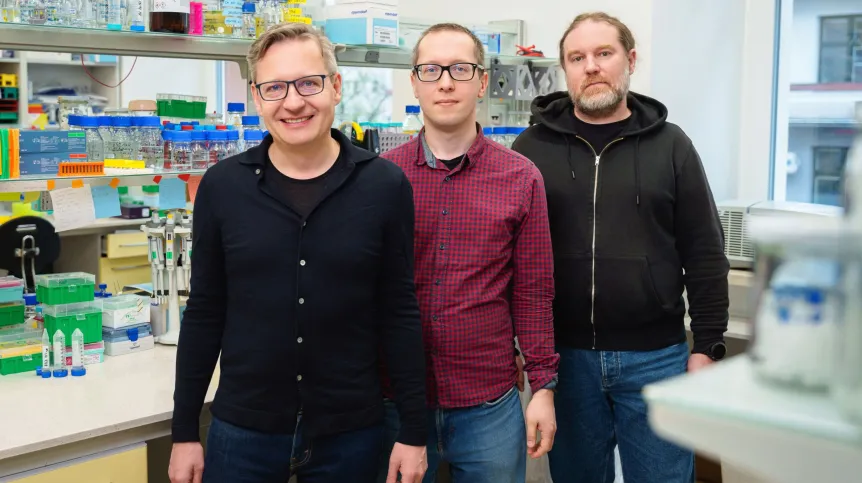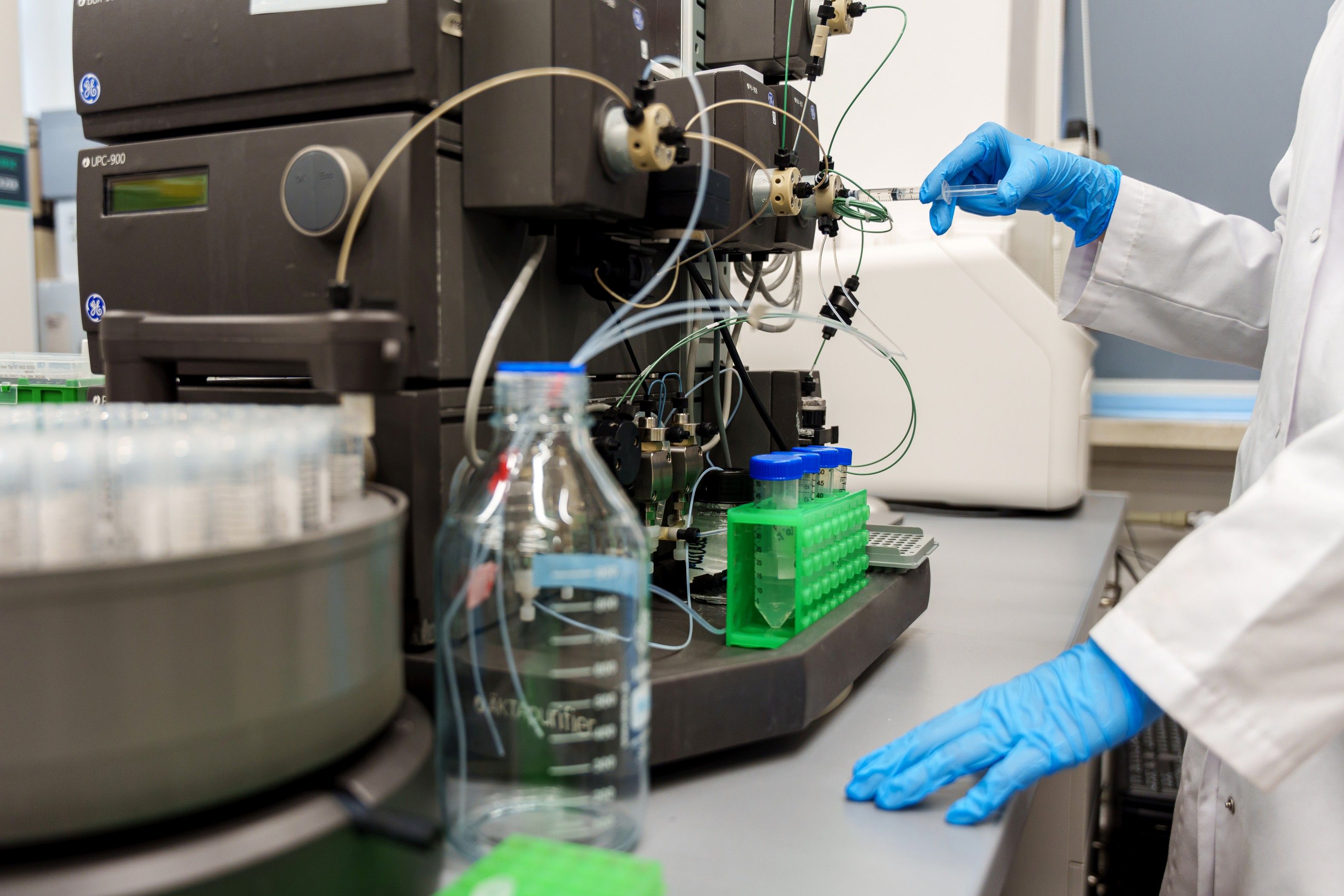
Researchers from the International Institute of Molecular and Cell Biology in Warsaw (IIMCB) have discovered a new mechanism that improves the efficiency of mRNA-based therapies. Their findings have just appeared in the prestigious journal Nature.
According to the scientists, the research findings will facilitate the development of novel therapeutics against cancers and infectious diseases.
mRNA vaccines played a key role in controlling the spread of the pandemic. However, mRNA itself is an exceptionally unstable molecule. This does not affect the safety of the therapy but limits its effectiveness, for example, by shortening the duration of action', says one of the lead authors of the study, Professor Andrzej Dziembowski from the Laboratory of RNA Biology - ERA Chairs Group at the International Institute of Molecular and Cell Biology in Warsaw.
mRNA molecules in vaccines act in the same way as natural mRNA (messenger RNA) found in our cells - they constitute a matrix for protein production. 'After intramuscular administration, the vaccine's mRNA reaches immune cells, which produce the S protein (a protein present on the surface of the SARS-CoV-2 coronavirus - ed. PAP). Our body learns to recognize it. Thus, if we later encounter the real virus, our organism will be ready to react and prevent the disease', says Seweryn Mroczek, PhD, from IIMCB and the University of Warsaw. Due to the instability of mRNA, vaccines based on it have a rather limited time of action.

Professor Andrzej Dziembowski explains that the so-called poly(A) tail is particularly important in mRNA stability and producing the protein that is written in it. It is located at the end of each mRNA and consists exclusively of adenine. That is why Dziembowski's team, in collaboration with researchers from other units of the Ochota Campus, analysed how poly(A) tails change in mRNA, which is present in popular vaccines used during the pandemic - Comirnaty and Spikevax. For this purpose, the researchers used the so-called nanopore sequencing, which enabled direct reading of the sequence of mRNA molecules of vaccines, including poly(A) tails.
'We created specialized software to analyse sequencing data from therapeutic mRNA molecules, focusing on poly(A) tail metabolism', adds Paweł Krawczyk, PhD, who was responsible for computational methods.
Until now, the assumption was that the tail could only shorten. Polish scientists have shown that the TENT5A enzyme plays a key role in extending the poly(A) tail. It is involved in adding building blocks (i.e. adenine molecules) to the poly(A) tail of mRNA. It is present in some cells of our body, primarily in those that produce a lot of proteins that are then secreted outside the cell. These include osteoblasts that produce collagen necessary for bone formation.
'Extending the poly(A) tail is like flipping over an hourglass - it +buys+ extra time, allowing the mRNA to function significantly longer in cells', Paweł Krawczyk explains. That is why the researchers call TENT5A polymerase a time machine for mRNA.
'We have demonstrated that TENT5A makes mRNA molecules more stable, enabling longer-lasting and more effective production of antigens - substances that trigger the body's immune response," he adds.
Dziembowski's team also observed which cells in the body play the most important role in the action of mRNA vaccines. These are macrophages, immune cell that is responsible for capturing and neutralizing 'intruders'.
'It is mainly macrophages that produced the protein recorded in the mRNA of the vaccine, which is necessary to trigger an immune response and immunity', the expert says.
JHe explains that, after the vaccine is administered to the muscle, the macrophages go to the injection site, take up the mRNA carried in special lipid molecules and then produce the antigen recorded in them. 'When the TENT5A enzyme is missing in macrophages, the vaccine is not as durable, less antigen is produced and the immune response is weaker', explains Professor Andrzej Dziembowski.
He emphasises that the stabilization of the mRNA molecule by the TENT5A enzyme is a universal mechanism, which is why it has enormous potential for medicine. The Polish discovery paves the way for the development of more durable vaccines and drugs based on mRNA. 'In a broad generalization, it is possible to make mRNA that will be an ideal substrate for the TENT5A enzyme, and at the same time inhibit the mechanisms causing mRNA degradation', Dziembowski explains. He adds that his team has ideas for the application of their discovery in medicine.

The groundbreaking research was carried out based on the IN-MOL-CELL research infrastructure of the International Institute of Molecular and Cell Biology. It was purchased thanks to funds from the National Reconstruction Plan.
The authors of the study emphasise that the publication in the weekly Nature (the world's highest Impact Factor - IF among multidisciplinary publications) is a distinction in the world of science. 'Our road to Nature was long and bumpy. We started working on the project during the pandemic in mid-2021. After submitting the first version of the paper in December 2022, we were repeatedly asked to add new data and make corrections', Dziembowski says. The scientists are particularly proud of the fact that this is the first publication in the field of life sciences in Nature in the 21st century, which was developed exclusively by Polish scientific institutions.
The research results became the inspiration for the creation of an innovative educational programme. In October this year, a new master's degree programme will be launched at the Faculty of Medicine of the University of Warsaw - Biological Therapeutics. Its co-creator is the International Institute of Molecular and Cell Biology. The program will allow to educate future specialists in the field of biotechnology, biological drugs and mRNA-based therapies.
The paper „Re–adenylation by TENT5A enhances efficacy of SARS–CoV–2 mRNA vaccines” is available here.
PAP - Science in Poland, Joanna Morga (PAP)
jjj/ bar/













